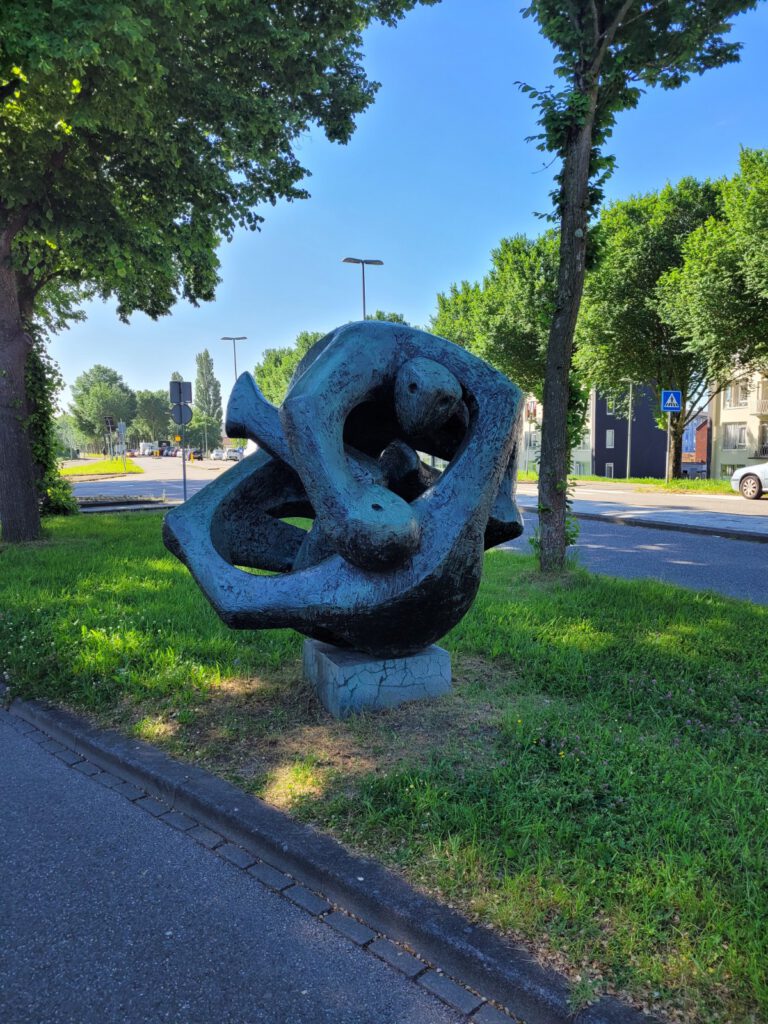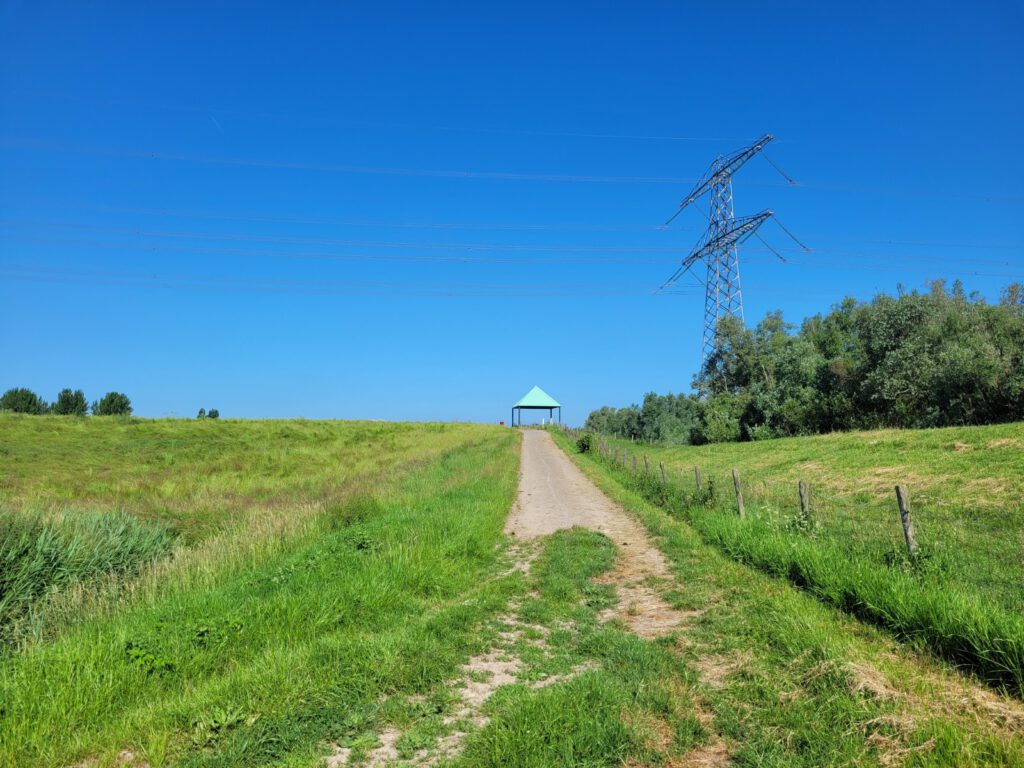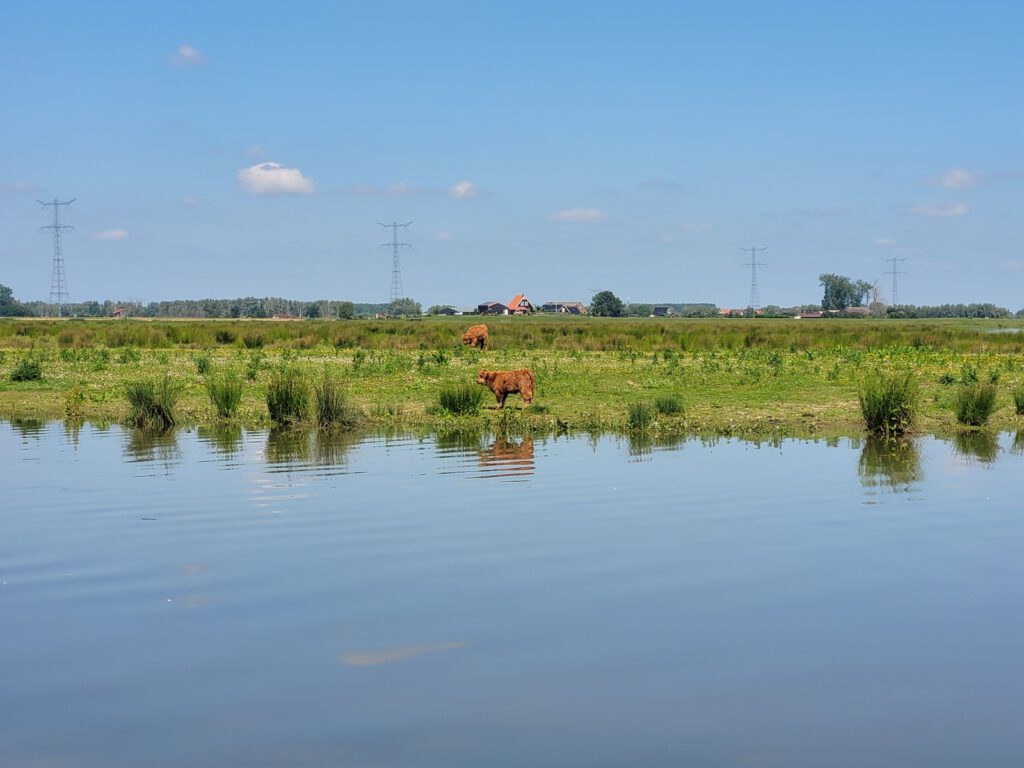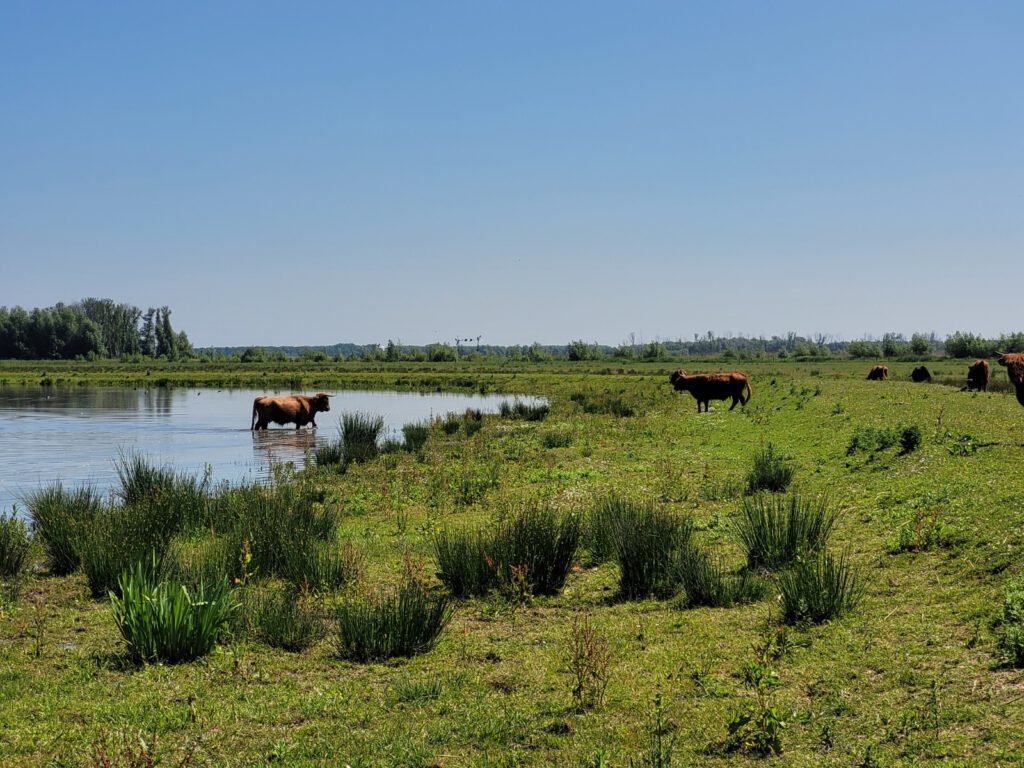
It doesn't always have to be a trail from start to end to run. As long as there is enough nature for me to see. Of new lands and old villages between Dordrecht and Gorinchem.
With vaccination number two in sight, and having just come back from a tough run along the Maas-Niederrheinpadit was time for a somewhat easier adventure close by. Ok, I admit, there was some pressure not to stay away until late in the evening to do another stage of the Maas-Niederrheinpad. So I decided I should limit the travel to a maximum of one hour to the starting point. And that brings me approximately to Dordrecht, an area quite unknown to me.
It was my intention to run about a marathon, in order to gather some kilometers for the Great Virtual Race Across Tennessee. I thought that was necessary for the competition as I foresaw running would be limited the coming weeks, considering the long-lasting muscle pain after the first vaccination and the upcoming holiday weeks in Drenthe, where it would probably not be appreciated to stay away for whole days.
The possibilities for that distance were both large and small. Dordrecht and surroundings are actually divided over islands in the Merwede. In this case that means that you are dependent on a number of ferries if you want to run from point to point. Or you can extend the route to a round trip through the Nieuwe Biesbosch. Because some of the ferries seemed too uncertain in advance – yes, there's a website for that: veerponten.nl – I decided to go through the Biesbosch via Woudrichem and Fort Vuren to Gorinchem.
Green carpet
I had mapped out my route from Dordrecht station, directly over a stretch of long-distance footpath towards ferry number 1 at ’t Landje van Kop. To get to that path the route first meandered through a number of small streets and residential areas; unfortunately – or maybe luckily because of the crowds - it did not go through the old city center. Here the Garmin proved what I always say: pay attention to your map, not to your directions. The through road was in reality a jumble of turns into sidestreets and with only a breadcrumb trail and directions, you're guaranteed to make a detour.
Once at the right path, it turned out that a green carpet had been laid out. A path of about one meter wide, neatly mowed through the high grass on the side of the Wantij, the waterway that divides the island of Dordrecht in two. It was actually quite comfortable. And the funny thing was, for a long time I had about the same pace as a boat in the Wantij. Actually, I was a little faster, but the boat didn't stop to take pictures or check blood sugars.
At one point, however, my nicely mowed path stopped. I arrived at an unclear piece of trail, where according to the map (planned along the walking routes in Komoot) I should run over a dike. But that dike was now forbidden territory. The alternative with red and white signs was completely overgrown. So that meant going back and continuing over the asphalt, where every minute a bunch of kamikaze cyclists passed by.
Noordwaard
Fortunately, however, I also had a lucky break. Exactly at the moment I arrived at ’t Land van Kopje, the ferry was ready to take me across the Nieuwe Merwede. This canal/seaside river divides the Biesbosch. By the way, this ferry is the only way to cross this canal if you don't have your own boat, as there are no bridges. And with a width between 325 and 695 meters, swimming over it is a bit too much for me. Especially as it is one of the busiest trade routes in the Netherlands...
The crossing itself only took about 10 minutes. That was just enough to sell all the cyclists and me – we were almost at the mooring – a ticket. I saved myself another 20 cents by booking a one way ticket, to the surprise of the skipper. After all, it is the only crossing point in more than 20 km.
The part of the Biesbosch where I was going to run is called the Noordwaard. For a long time it has been an agricultural area, but because of the big river floods in the nineties it was designated as a flood area. Therefore the area has been de-poldered and partly given back to nature. But predictably with many paved paths. The area is very suitable for cycling, but not so much for trail running. Perhaps I should have chosen another part of the Biesbosch for that.
Hairy coos
The first ‘real’piece of nature I encounter is at the Pannenkoek and Museum Island. On this griend (which stands for a less exciting sounding field of willows) you will find willow trees, a recreated hut made of willow twigs and a short hiking route through it. Actually it wasn't in my route, but I wandered along the paths anyway. The willows and linden trees that I saw here were a welcome change to the wide open landscape of ponds and marshland. After this intermezzo it's back to following roads.
Fortunately, in addition to the hard asphalt, there was also the occasional piece of green carpet. And here and there I followed a creek, which has returned due to the depoldering. That makes running a little bit easier as it gives you the feeling that you're really in the middle of the countryside, instead of commuting.
Along the creeks grow many blue flowers. A beautiful sight that unfortunately does not come across well on the photo. It was also really quiet here. There are hardly any hikers, bicyclists; cars are not allowed there. Occasionally a boat passes by.
In this peaceful environment, I almost began to wonder if I was allowed to walk here. A clear path was not to be found, but neither was a sign prohibiting because of the breeding season. However, there were many highlanders. In the middle of the dike of course, which I thought had to be the path. Moreover, at the end of the nature reserve, I had to cross a wading area for these cattle. There was no alternative to cross the creek. No problem, although the water stank of cow dung.
Challenging dresses
Slowly I arrived at the first village on the trail: Werkendam. Walking on the shadowless asphalt with the sun shining on it made me quite thirsty, so I immediately grabbed the opportunity to drink something. With this weather I would never be able to make it the whole way with my water supply.
A little later I seemed to encounter a mirage. A girl quickly pulled up her pants and put on a green dress in a little park as I was running past. Her friend was taking pictures. A little later I ran into them again in the deserted city center (Sunday) where they were giggling and standing on a spot out of sight with their bikes and camera at the ready, fidgeting with the green dress. Maybe I know too many models because of my model painting, but I had the strong impression the ladies were busy with a photo shoot.
From here the route was actually quite easy. Follow the Boven Merwede to the historical town of Woudrichem via the dike. That meant asphalt, asphalt, asphalt and maybe a bit of mowed verge where you couldn't really run because of the hard pollen (at least without a rock plate).
Tiger
The plan was to take the ferry from Woudrichem (about 35 km from Dordrecht) to Loevestein Castle and then to Fort Vuren and from Vuren continue running to Gorinchem. Loevestein is of course mainly known for the escape of Hugo de Groot (Grotius for the Leiden people), who ended up there because of his role in one of the first of many Protestant schisms that seemed to tear our republic apart. He was allowed to continue his writing in the castle, and in the bookcases they provided him with for his work, he saw an opportunity to escape via Gorinchem.
It seemed a nice way to get a bit of history. Unfortunately fate decided otherwise. The ferry to Vuren was not as regular as the one to ’t Land van Kopje. It is true that the ferry often goes from Woudrichem to Gorinchem, but then it goes alternately to Loevestein (same river bank as Woudrichem) and to Vuren (other side where Gorinchem is situated). To get to Vuren, I would have to wait about 1.5 hours. That was a bit too much because it was well after four o'clock. So I decided to make a round trip to Loevestein and from there to Gorinchem, from where I could take the train back. From Loevestein it was mainly hilarity by the way: Children who boarded my train thought my tiger face mask (from Blijdorp zoo) was really great.
In the end, the number of kilometers was stuck at 37,8 because of the ferry problem. I think the route itself consisted of two thirds of asphalt and is pretty easy to run. It was a nice trip for sure, but next time I'd rather choose a route in another, less paved, part of the Biesbosch.





































